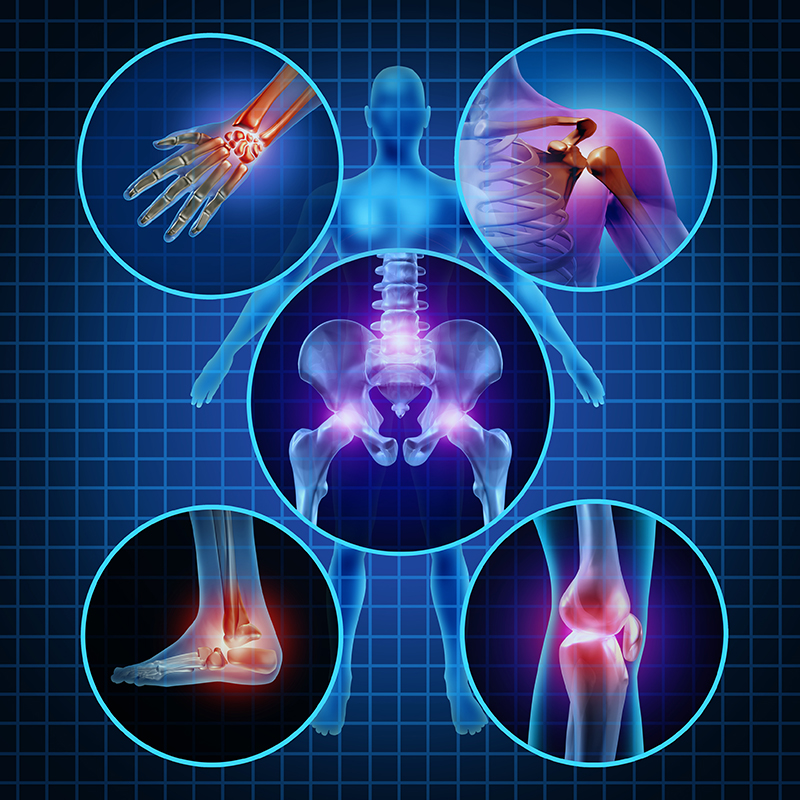Chronic and Overuse injuries
Posted on May 22nd, 2018 by Andries Lodder
Types of Injuires
The majority of injuries sustained through exercise and sports can be categorized into two groups, acute injuries and chronic overuse injuries. In simple terms acute injuries occur suddenly and usually because of a traumatic or specific incident, while chronic overuse injuries occur over time, there is no sudden onset and they get worse as time goes on. Chronic injuries usually occur as a result of repetitive movements with continuous impact on the same soft tissue structures occurring time and time again.
Preventing injuries is every athlete’s goals. However, chronic injuries are far easier to prevent then acute injuries. Due to the sudden, unplanned traumatic event, athletes can rarely prepare themselves against an acute injury. However, with stability training and proper muscular balance the severity of acute injuries can be lowered. Chronic injuries on the other hand can more often then not be prevent with the correct training to a far greater degree.
So how do chronic injuries occur?
Doing too much to quickly:
When we exercise we apply stress to our bodies, our bodies then adapt to this stress by strengthening the various tissues under stress. Muscles get bigger and stronger, tendons get stronger and bones get denser. However, if exercise is done to quickly and the body isn’t given enough time to adapt then the body is overloaded and the trauma it undergoes can lead to microscopic injuries and inflammation. If this is continued it come lead to a chronic injury.
When starting out an exercise program make sure to start slowly, perform exercises at an intensity that you can handle, focusing on form and schedule in adequate rest and recovery days. Only progress when your body is ready to.
Not giving the body enough time to rest and recover:
In a similar way to doing too much too quickly, not giving your body adequate rest also leads to injury as a result of inadequate adaptation. The microscopic injuries that occur build up and eventually lead to a big injury
Returning to play to soon after a previous injury:
After an injury the body goes through a specific healing process, there is usually a period of rest, healing and rehabilitation. If an athlete does not give the body the right amount of time to undergo its full healing process the likelihood re-injury is high. Likewise, after a serious injury an athlete will need to undergo rehabilitation. Specific exercises will need to be done to ensure they have proper muscle balance, correct biomechanics and adequate skills to return to sport. If this stage is skipped once again the likelihood re-injury is high.
Not Cross Training:
When training for a specific event or sport it means repeatedly doing the same activity. However, it is important to vary your training and do cross training. For example, cyclists should not only train on the bike, instead they should also include leg strength exercises as well as core stability into their programs. This strengthens the necessary muscles to help improve performance and prevent injury. It also protects the same muscles and joints from repeatedly taking impact.
Incorrect form or technique:
When training with incorrect form or technique extra stress is placed on certain joints and muscles. For example, when doing squats, the Glutes should be active, and the knees should not fall in. If they do, instead of the exercise working the Glutes strain will be placed on the inside of the knees and if the exercise is repeatedly done wrong this could damage the knee joint, ligaments and cause an injury.
Muscle Imbalances:
All muscles in the body act in pairs. There is an agonist and an antagonist. There should be balance between both these muscle groups. For example, the hamstrings and the quadriceps are a pair. If the one muscle group is significantly stronger than its counterpart, it can lead to injury as the joint that they act on will have limited movement in certain directions or to much movement in others. Thus placing increased tension and strain on both the joint and the muscles.
Using the wrong equipment:
This could be everything from the shoes worn to the surface train upon. Equipment used in sport should enhance performance and not hinder it. If a neutral foot runner wears pronator shoes it will put stress on their joints and muscles and lead to injury. If the floor being trained upon is concrete and repeated jumping or explosive movements are done it can lead to injury. The grip of a tennis racket, the length of a hockey stick, the grip on a running shoe, all equipment should be the right fit, type and not change the natural biomechanics of the athlete’s body.
The Four Stages of a Chronic Injury:
- The pain and discomfort disappear during the warm up
- The discomfort disappears during the warm up but reappears again after the activity.
- The discomfort gets worse during the activity
- There is pain and discomfort all the time
Treating the injury during stages 1 and 2 will mean with the appropriate measures will ensure it does not get worse and the athlete will be able to continue with their training with only a few alterations. However, if it gets to stages 3 and 4 then the aggravating activity needs to be stopped immediately, only returning after treatment and when completely symptom free.
Injuries can affect anyone not just athletes. With the correct training the severity of acute injuries and chronic injuries can be lowered to a significant degree. If you are experiencing pain and discomfort and think you are on the way to an injury seek professional help before it gets bad. Contact us here for more information on how to treat and prevent injuries from getting in the way of your training.
Tweet
